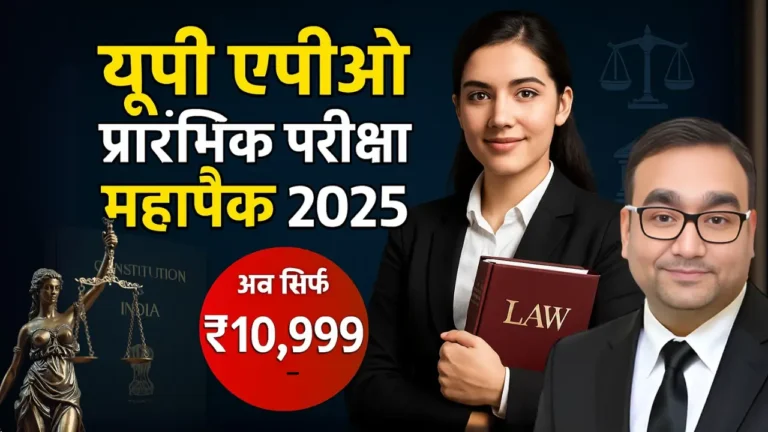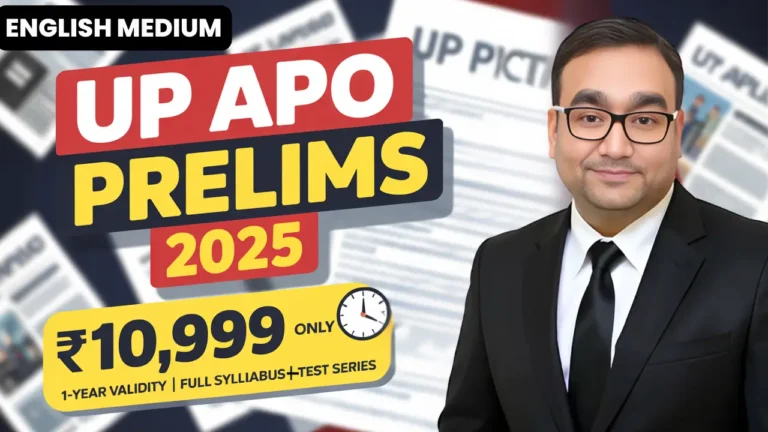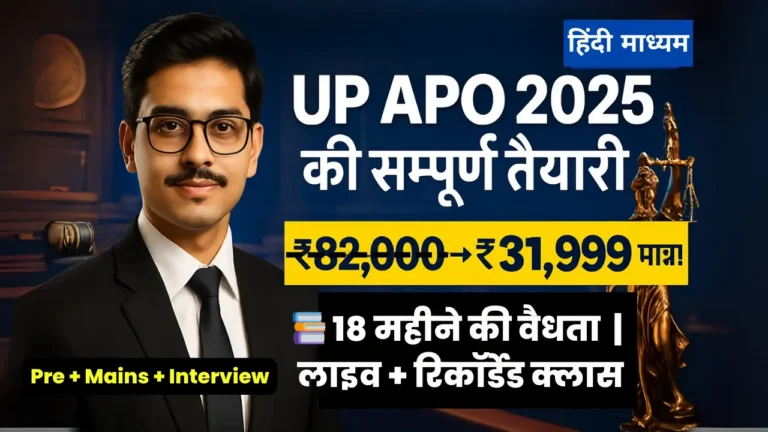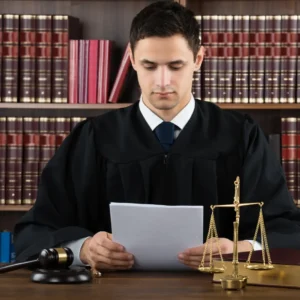On May 15, 2025, the SC approved the ₹500 crore Shri Banke Bihari Temple Corridor Plan in Vrindavan, allowing the use of temple funds to acquire 5 acres of land. This ruling in Ishwar Chanda Sharma v. Devendra Kumar Sharma & Ors. aims to improve infrastructure and ensure a safer pilgrimage experience. Dive into the details, implications, and UPSC 2025 insights here!
Introduction: A Landmark Ruling for Vrindavan Pilgrims
On May 15, 2025, the Supreme Court delivered a significant ruling in Ishwar Chanda Sharma v. Devendra Kumar Sharma & Ors., approving the Uttar Pradesh government’s ₹500 crore Shri Banke Bihari Temple Corridor Plan in Vrindavan. The court permitted the use of temple funds to acquire 5 acres of land for the corridor, overturning the Allahabad High Court’s earlier prohibition. This decision, made by Justices Bela M. Trivedi and S.C. Sharma, aims to address long-standing infrastructure issues and ensure a safer, more comfortable pilgrimage experience for millions of devotees visiting the sacred Banke Bihari Temple.
For UPSC 2025 aspirants, law students, and Krishna devotees, this ruling is a pivotal development, highlighting the intersection of judicial oversight, heritage conservation, and public welfare. This blog explores the Supreme Court’s decision, its background, implications, and why it matters for your exam preparation.
Background: The Need for the Banke Bihari Temple Corridor
The Banke Bihari Temple in Vrindavan, one of the holiest sites for Krishna devotees, attracts millions of pilgrims annually—30,000 to 40,000 daily, with numbers surging to 1.5 lakh on weekends and 5 lakh during festivals like Janmashtami. However, the temple’s limited infrastructure has led to overcrowding and tragic incidents, such as the 2022 stampede that claimed lives due to inadequate space and facilities.
The Uttar Pradesh government, under the Uttar Pradesh Braj Planning and Development Board Act, 2015, proposed a ₹500 crore corridor plan to address these issues. The plan includes acquiring 5 acres of land to create a holding area with parking lots, accommodation, toilets, security check posts, and other amenities. However, the Allahabad High Court, in its November 8, 2023 order, prohibited the use of temple funds for land acquisition, prompting the state to appeal to the Supreme Court.
The Supreme Court’s Ruling: Key Highlights
In its May 15, 2025 ruling, the Supreme Court modified the Allahabad High Court’s order, allowing the Uttar Pradesh government to use the Banke Bihari Ji Temple’s fixed deposits to purchase 5 acres of land. Here are the key points of the judgment:
- Permission to Use Temple Funds: The court permitted the state to utilize the temple’s fixed deposits for land acquisition, overturning the Allahabad High Court’s restriction. However, it mandated that the acquired land be registered in the name of the deity, Shri Thakur Banke Bihari Ji, ensuring the temple retains ownership.
- ₹500 Crore Development Plan: The state government’s comprehensive ₹500 crore plan was approved, focusing on infrastructure development to accommodate the massive influx of pilgrims.
- Emphasis on Safety and Welfare: The court highlighted the 2022 stampede as a wake-up call, noting that effective temple governance is crucial for public and spiritual welfare. It stressed the need for parking, accommodation, and security to prevent future tragedies.
- Collective Effort for Development: The bench emphasized that the development of Mathura and Vrindavan requires collaboration between the government, temple trusts, local communities, and other stakeholders. Sites like the Yamuna River, Kashi Ghat, Vishram Ghat, and Kusum Sarovar also need beautification to enhance the pilgrimage experience.
- Upholding Heritage: The court acknowledged the historical and religious significance of Mathura and Vrindavan, calling for wider roads, dharamshalas, hospitals, and public amenities to ensure a spiritually fulfilling journey for devotees.
Implications of the Ruling
The Supreme Court’s decision has far-reaching implications for pilgrims, the local economy, and India’s judicial and cultural landscape:
- Enhanced Pilgrimage Experience: The corridor will accommodate up to 50,000 visitors at a time, offering facilities like waiting areas, cloakrooms, shoe storage, potable water stations, medical aid, and childcare services. This will make darshan safer and more comfortable, especially during peak festival times.
- Boost to Religious Tourism: Vrindavan is a key destination for Krishna devotees, and the corridor, modeled after the Kashi Vishwanath Corridor, is expected to attract more pilgrims, boosting the local economy. Religious tourism in India already contributed ₹1,34,543 crore in 2022, and projects like this further enhance its potential.
- Judicial Oversight in Temple Governance: The ruling underscores the judiciary’s role in ensuring effective temple administration, particularly in light of maladministration issues in the Braj region. It sets a precedent for balancing heritage conservation with modern infrastructure needs.
- UPSC Relevance: For 2025 aspirants, this case touches on themes like judicial activism, heritage conservation, governance, and the role of public policy in religious tourism—key topics for prelims, mains, and interviews.
Challenges and Criticisms
Despite its benefits, the corridor project has faced opposition:
- Local Resistance: Residents, priests, and shopkeepers in Vrindavan have protested the project, fearing displacement and disruption of their livelihoods. In 2023, some wrote letters in blood to CM Yogi Adityanath, urging him to shelve the plan.
- Temple Autonomy Concerns: The Sevayat Goswamis, who manage the temple, have historically resisted government interference, arguing that the temple is a private entity. The Supreme Court’s condition that the land be registered in the deity’s name addresses some of these concerns, but tensions may persist.
- Balancing Tradition and Modernity: The project must ensure that the temple’s core structure and traditions remain untouched, as emphasized by CM Yogi Adityanath when the plan was conceptualized.
Why This Matters for UPSC 2025 Aspirants
- Prelims: Memorize key facts—₹500 crore plan, 5-acre land acquisition, case title (Ishwar Chanda Sharma v. Devendra Kumar Sharma & Ors.), and the Uttar Pradesh Braj Planning and Development Board Act, 2015.
- Mains: Write essays on topics like:
- “Judicial oversight in temple governance: Lessons from the Banke Bihari Corridor case.”
- “Balancing heritage conservation with modern infrastructure: A case study of Vrindavan’s development.”
- Interviews: Discuss the role of religious tourism in India’s economy, the judiciary’s role in public welfare, and the challenges of implementing large-scale infrastructure projects in sacred sites.
Conclusion: A New Era for Vrindavan Pilgrims
The Supreme Court’s approval of the ₹500 crore Banke Bihari Temple Corridor Plan on May 15, 2025, marks a turning point for Vrindavan’s pilgrimage landscape. By addressing infrastructure gaps, ensuring safety, and preserving the temple’s sanctity, this ruling paves the way for a spiritually enriching experience for millions of devotees. For UPSC 2025 aspirants, this case offers valuable insights into judicial activism, governance, and the socio-economic impact of religious tourism. As Mathura and Vrindavan prepare for this transformation, the collective effort of all stakeholders will be key to its success.
Call-to-Action
Ace your UPSC 2025 exams with our expert courses on constitutional law and current affairs at https://doonlawmentor.com/courses! Follow @doonlawmentor on Instagram for daily updates! #BankeBihariCorridor #SupremeCourt2025
FAQs for 2025 Exam Prep
- What is the Banke Bihari Temple Corridor Plan?
A ₹500 crore project to develop a corridor around the Banke Bihari Temple in Vrindavan, including 5 acres of land for parking, accommodation, and other amenities. - What did the Supreme Court rule on May 15, 2025?
The court allowed the Uttar Pradesh government to use temple funds to acquire land for the corridor, provided the land is registered in the deity’s name. - Why was the corridor plan proposed?
To address overcrowding and safety issues, highlighted by the 2022 stampede, and to improve the pilgrimage experience for millions of devotees. - How does this ruling impact UPSC 2025 preparation?
It covers key themes like judicial activism, heritage conservation, and religious tourism, relevant for prelims, mains, and interviews.
#SupremeCourtJudgment #BankeBihariTemple #VrindavanCorridor #TempleFundsCase #LegalUpdateIndia #SCJudgment2025 #JudiciaryExamPrep #LawForAspirants #DeityAsLegalEntity #BrajDevelopmentAct #TempleGovernance #DoonLawMentor






